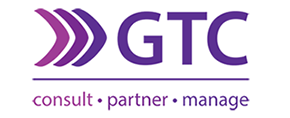Wealth Management

Jenny Williams
Senior Servicing Consultant
_______________________________________________________________________________________________________
Compulsory investments
Part two in our series on de-mystifying some industry jargon and technical language
Last quarter we explained how discretionary investments are used in the construction of a financial plan.
Industry lingo for investments that are approved by government with tax deductibility specifically for retirement savings, is ‘compulsory’ investments.
Why are these compulsory investments?
A maximum of 27.5% of taxable income, limited to a maximum investment of R350 000 per annum of taxable income, is allowed into compulsory retirement products.
Compulsory investments have a compulsory element to them. To encourage citizens to save for their retirement, and not become a burden on the state in their old age, Government provides tax deductions against taxable income on approved registered retirement products which can be pension funds, provident fund and/or retirement annuities (RA’s).
These compulsory investments come with additional specific terms and conditions such as tax deductibility on contributions, tax relief on maturity, limitations on access prior to retirement, maximum ‘cash’ amounts allowed on pay-out at retirement and most recently, what is now known as T-Day annuitisation (creating an income for life which is referenced further in this article).
This article is intended only to create an understanding as to what a compulsory investment is (as the last article on discretionary investments was also intended). Compulsory investment products are complex and tax driven. Professional financial planning advice is strongly recommended before you elect any choice of retirement savings products.
Membership of, and contributions to a compulsory retirement investment is often a compulsory requirement of an employment contract. Whilst RA’s are not usually contractually connected to an employment contract, it may be that they are offered as a group scheme by an employer as a cost-effective alternative retirement savings mechanism for small businesses and self-employed business people.
RA’s are compulsory in that they cannot be accessed until age 55 (or on formal emigration) and only one third of the funds may be taken in cash after the deduction of tax with the balance being used to purchase a compulsory life annuity or a living annuity.
Portfolio limitations within compulsory investments
 Regulation 28 of the Pension Funds Act imposes limits and restrictions on the investment portfolios of compulsory products. Portfolio managers must adhere to these maximum limits which apply to the asset categories which may be used, including limits on both South African and international equities, bonds, cash, and property holdings.
Regulation 28 of the Pension Funds Act imposes limits and restrictions on the investment portfolios of compulsory products. Portfolio managers must adhere to these maximum limits which apply to the asset categories which may be used, including limits on both South African and international equities, bonds, cash, and property holdings.
Regulation 28 is designed by Government to ensure that retirement portfolios are secure, not overly aggressive, and are able to meet future maturity objectives. Click here to view our video on Regulation 28 changes, which was focussed on the mooting of further investment limitations.
How to use compulsory investments for your retirement planning
It’s not the intention of this article to provide a comprehensive explanation of the tax structuring and income provision from compulsory monies, but rather to identify and de-mystify the difference between discretionary and compulsory investing. In future articles we will discuss how to best structure the various types of retirement funds and how to combine these with discretionary investments to maximise the tax efficiency that is permitted.
T-Day and the proposed Two-pot System will be detailed in these future articles. If you wish to access some detail on the options at retirement, visit the links below.
See here for GTC’s explanation on T-Day.
See here for the annuity options Road Map.
See here for the Two-pot System information.
Contact our Wealth Management team on wealthmanagement@gtc.co.za for assistance in this regard.







